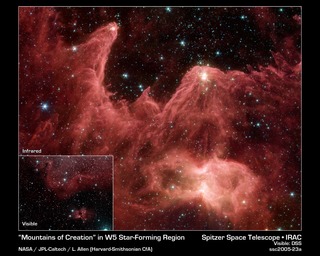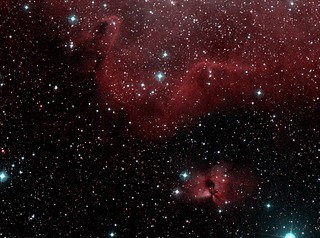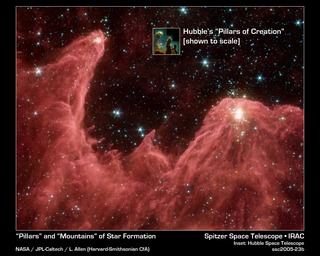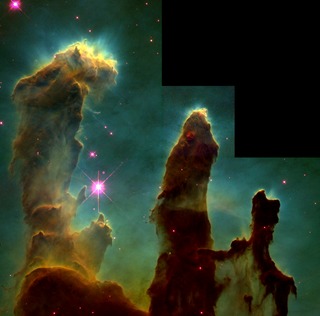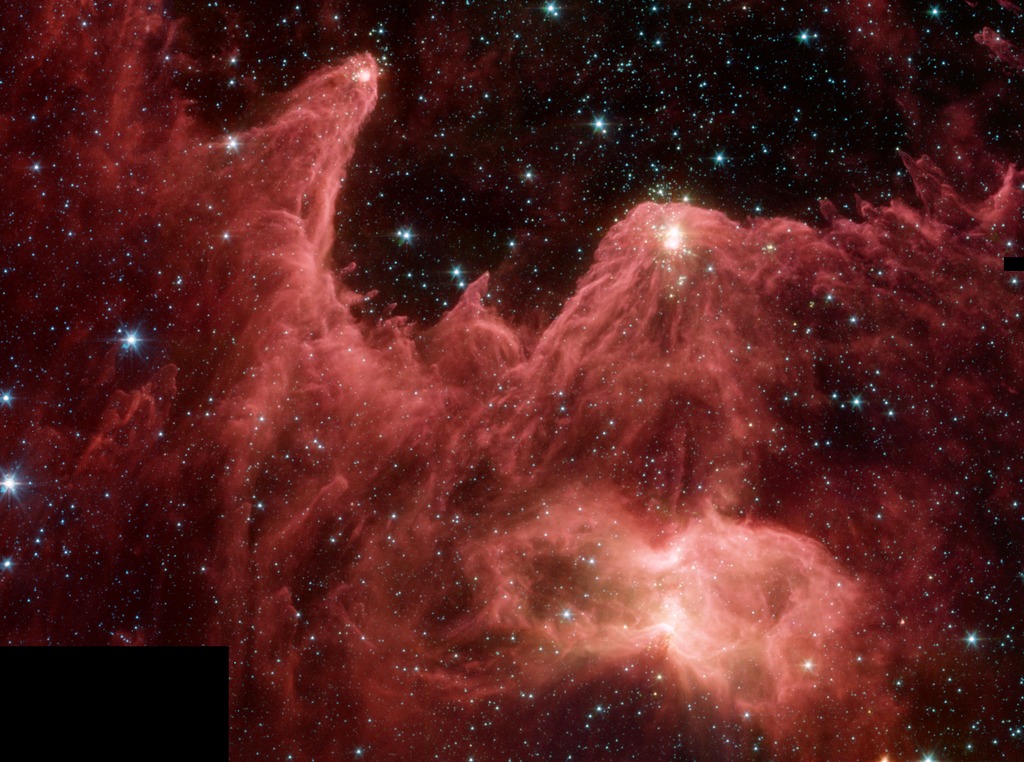
Credit: NASA/JPL-Caltech/L. Allen (Harvard-Smithsonian CfA)
Observation • November 9th, 2005 • ssc2005-23a1
ssc2005-23a1
This image shows an infrared data taken by NASA's Spitzer Space Telescope of a region dubbed the "Mountains of Creation." Towering pillars of dust are aglow with the light of embryonic stars (white/yellow). The added detail in the Spitzer image reveals a dynamic region in the process of evolving and creating new stellar life.
Infrared light can travel through dust, while visible light is blocked by it. In this case, infrared light from the stars tucked inside the dusty pillars is escaping and being detected by Spitzer. Also, the dust making up the pillars has been warmed by stars and consequently glows in infrared light, where Spitzer can see it. This is a bit like seeing warm bodies at night with infrared goggles. In summary, Spitzer is both seeing, and seeing through, the dust.
The Spitzer image was taken by the infrared array camera on Spitzer. It is a 4-color composite of infrared light, showing emissions from wavelengths of 3.6 microns (blue), 4.5 microns (green), 5.8 microns (orange), and 8.0 microns (red).
About the Object
- Name
- Mountains of Creation • W5
- Type
- Nebula > Type > Star Formation
- Distance
- 7,000 Light Years
Color Mapping
| Band | Wavelength | Telescope |
| Infrared | 3.6 µm | Spitzer IRAC |
| Infrared | 4.5 µm | Spitzer IRAC |
| Infrared | 5.8 µm | Spitzer IRAC |
| Infrared | 8.0 µm | Spitzer IRAC |
Astrometrics
- Position (J2000)
- RA =3h 1m 25.1s
- Dec = 60° 34' 54.5"
- Field of View
- 34.8 x 25.9 arcminutes
- Orientation
- North is 84.2° left of vertical
